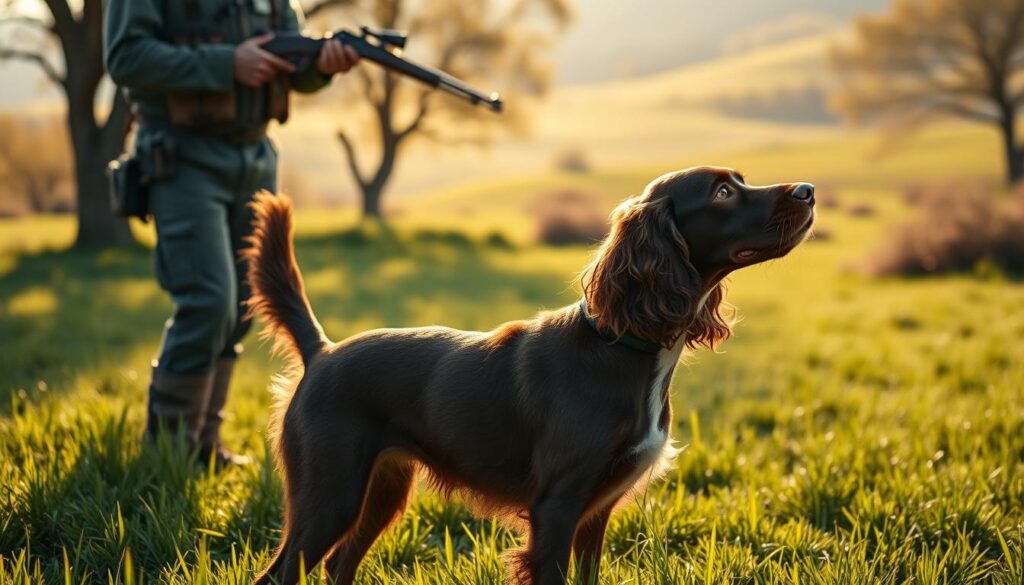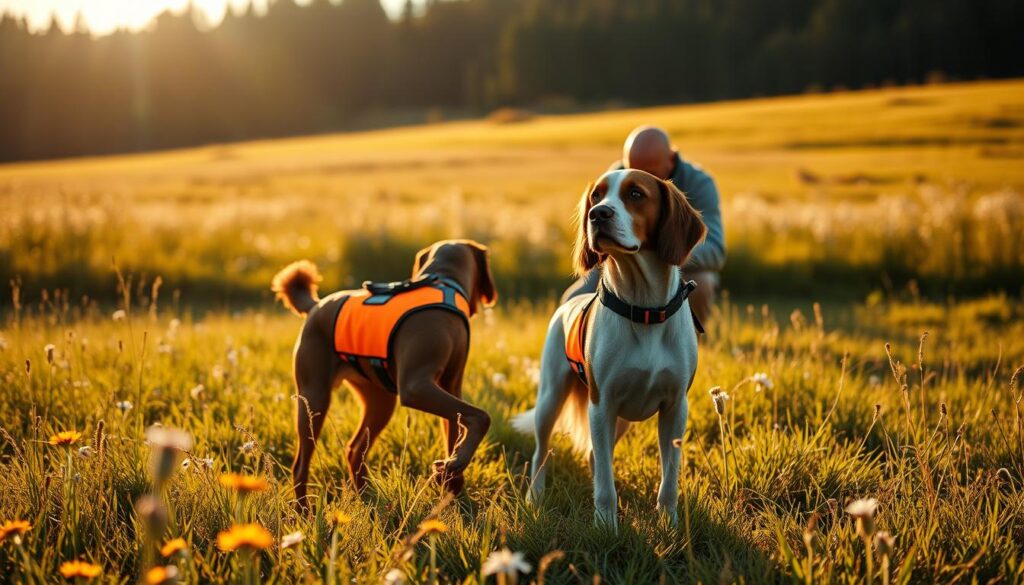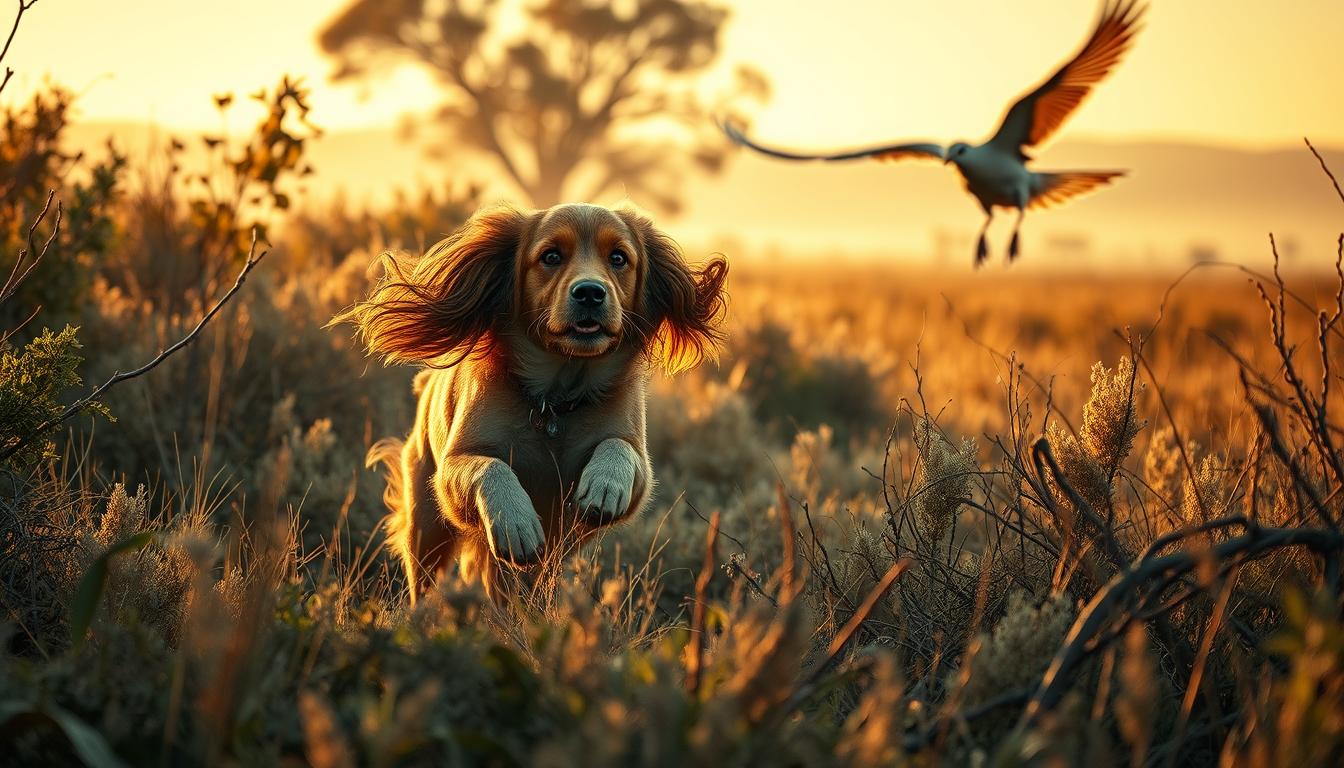For generations, hunting companions with keen instincts have played vital roles in Australia’s outdoor traditions. Originally developed in Britain, certain gun dogs were bred to locate and drive game birds toward hunters – a skill still valued today. Their natural drive to work in dense cover makes them ideal partners for those pursuing quail, pheasant, or other upland species.
Modern Australian conditions demand adaptations to traditional methods. Local terrain, climate, and regulations require tailored approaches to training and fieldwork. By blending historical knowledge with contemporary practices, hunters can create effective strategies that prioritise safety and success.
This guide explores how to harness a dog’s innate abilities while addressing unique challenges faced in Australian environments. From selecting the right breed to refining techniques for specific scenarios, we focus on building trust and consistency between hunter and animal. Proper preparation ensures these energetic partners thrive in diverse settings.
Key Takeaways
- Historical breeding shaped these dogs into expert flushers for game birds
- Australian conditions require adjustments to traditional flushing methods
- Genetic traits make the breed naturally suited to dense cover work
- Combining old and new training approaches boosts field performance
- Safety remains crucial when adapting techniques to local species
- Strong partnerships enhance success in varied hunting scenarios
Heritage and the Role of the Hunting Cocker Spaniel
The journey of these compact hunting partners began centuries ago in the British Isles. Breeders shaped their instincts through careful selection, focusing on traits ideal for navigating thick undergrowth. This dedication created dogs that excel in both stamina and scent detection.
Historical Background and Breeding
Scottish kennels played a pivotal role in preserving working-line genetics. The Jordieland program, developed in Dumfriesshire, became renowned for producing reliable field performers. Breeders prioritized drive and trainability, ensuring each generation maintained sharp hunting skills.
| Breeding Line | Key Traits | Adaptability |
|---|---|---|
| Jordieland (Scotland) | High prey drive, compact size | Thrives in dense terrain |
| Modern Show Lines | Calmer temperament | Better suited for homes |
| Revival Programs (1970s) | Balanced energy | Dual-purpose family/hunting dogs |
From Field Dogs to Family Companions
While Scottish lines stayed true to their roots, other regions saw shifts toward companion roles. Today’s breeders face a delicate balance – maintaining working instincts while ensuring dogs adapt to family life. Proper training helps them switch between fieldwork and relaxed home environments.
Australian hunters benefit from this genetic legacy. Proven breeding programs provide partners capable of handling local challenges while offering companionship beyond the hunt. Their versatility makes them equally at home in a kennel or curled up by the fireplace.
cocker spaniel bird flushing: Techniques and Training Methods
Mastering effective techniques requires understanding a working dog’s instincts while shaping behaviours suited to Australian hunting conditions. Traditional methods often clash with their innate drive to pursue game, demanding tailored approaches that balance enthusiasm with control.

Step-by-Step Training Guide
Begin with rock-solid recall and obedience drills before exposing your partner to game scents. Use gun dog dummies to build retrieving skills in distraction-free environments. This foundation prevents overwhelming the animal when introducing live scenarios.
Enhancing Marking and Hup Techniques
The “hup to flush” command transforms chaotic flushes into controlled moments. A well-timed sit allows safer shots and clearer marking of fallen game. Reinforce this behaviour through:
- Short, focused sessions with planted scent trails
- Delayed retrieves to develop patience
- Consistent verbal/hand signal combinations
Integrating the Use of a Gun Dog Dummy
Dummies simulate real retrieves while maintaining training standards. Alternate between:
| Tool | Purpose | Frequency |
|---|---|---|
| Canvas Dummy | Basic retrieves | Daily |
| Scented Dummy | Bird association | 3x weekly |
| Weighted Dummy | Strength building | 2x weekly |
Pair these exercises with access to varied terrain to sharpen skills needed for Australian bush conditions. Professional trainers recommend dedicating 15-minute blocks multiple times daily rather than marathon sessions.
Enhancing Safety and Steadiness in the Field
Controlled teamwork between hunter and gun dog becomes vital when navigating Australia’s thick scrub. A single lapse in discipline could turn productive fieldwork into hazardous situations, especially with multiple shooters present.

The Importance of Steadying Your Flusher
Pen-raised game often lacks the survival instincts of wild birds, creating unique risks. These birds may flutter weakly instead of bursting upward, tempting eager partners to break position. Three core strategies prevent dangerous chases:
- Reinforce “hup” commands using low-distraction environments first
- Gradually introduce bird scent while maintaining leash control
- Use check cords to physically block forward momentum during training
Managing Prey Drive in Dense Cover
Australian terrain demands dogs that balance enthusiasm with responsiveness. Compare these approaches for bush-ready partners:
| Method | Purpose | Frequency |
|---|---|---|
| Whistle Drills | Instant stop commands | Daily |
| Scent Puzzles | Focus development | 3x weekly |
| Cover Crawls | Close-quarter control | 2x weekly |
Seasoned hunters report 40% fewer safety issues after implementing structured steadiness programs. As one professional trainer notes: “A dog doing its job properly stays alive to hunt another day.”
Adapting Training Techniques for Australian Hunting Conditions
Australia’s rugged landscapes demand more than textbook training approaches. Successful handlers modify proven strategies to address local challenges while respecting the instincts of their partners. This balance ensures dogs remain effective in diverse settings, from sunbaked plains to dense coastal scrub.
Customising Methods for Local Game and Terrain
Traditional European drills often falter against Australian conditions. Native quail and pheasants behave differently to their northern counterparts, requiring adjusted scent work and retrieval patterns. Smart training programs incorporate:
| Training Aspect | Traditional Approach | Australian Adaptation |
|---|---|---|
| Session Duration | 45-minute drills | 20-minute heat-safe intervals |
| Retrieve Practice | Open fields | Rocky outcrops & spinifex |
| Bird Introduction | Pen-raised stock | Wild bird scent trails |
One dog trainer notes: “Working in our scrub teaches patience you won’t learn from British manuals. Dogs must read wind shifts through gum trees, not oak forests.”
Real-World Success Stories from Australian Hunters
Remote guidance bridges the gap for isolated owners. Chantal, a Swiss hunter, shares:
“Before training, Blake chased every movement. Now he ignores distractions – even chooses not to pursue.”
Local members report similar breakthroughs. Emma recalls her spaniel’s transformation:
“Albie went from chaotic greetings to calm lead work. His recall defies expectations in busy environments.”
These stories prove adaptable methods work across continents. Australian handlers increasingly connect through online networks, sharing strategies tailored to their unique hunting needs.
Conclusion
In Australia’s demanding landscapes, compact gun dogs prove size belies capability. Their legendary enthusiasm transforms thick scrub into productive hunting grounds, earning them the “Cadillac” title among seasoned trainers. These energetic partners thrive when owners embrace breed-specific methods rather than generic approaches.
Success stories reveal surprising versatility – from retrieving large game to adapting as household companions. The key lies in structured training programs that respect their working heritage while addressing modern safety needs. As one professional notes: “A well-prepared dog does its job better and lives longer to enjoy it.”
Australian hunters investing time in proper coaching ‘ll get years of reliable service. Their dual-purpose nature makes them ideal for families seeking both skilled fieldworkers and affectionate pets. This balance between tradition and adaptability ensures their place in our hunting culture endures.



